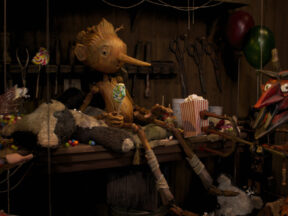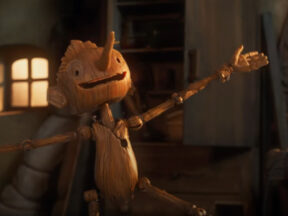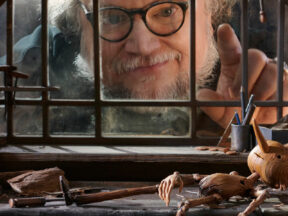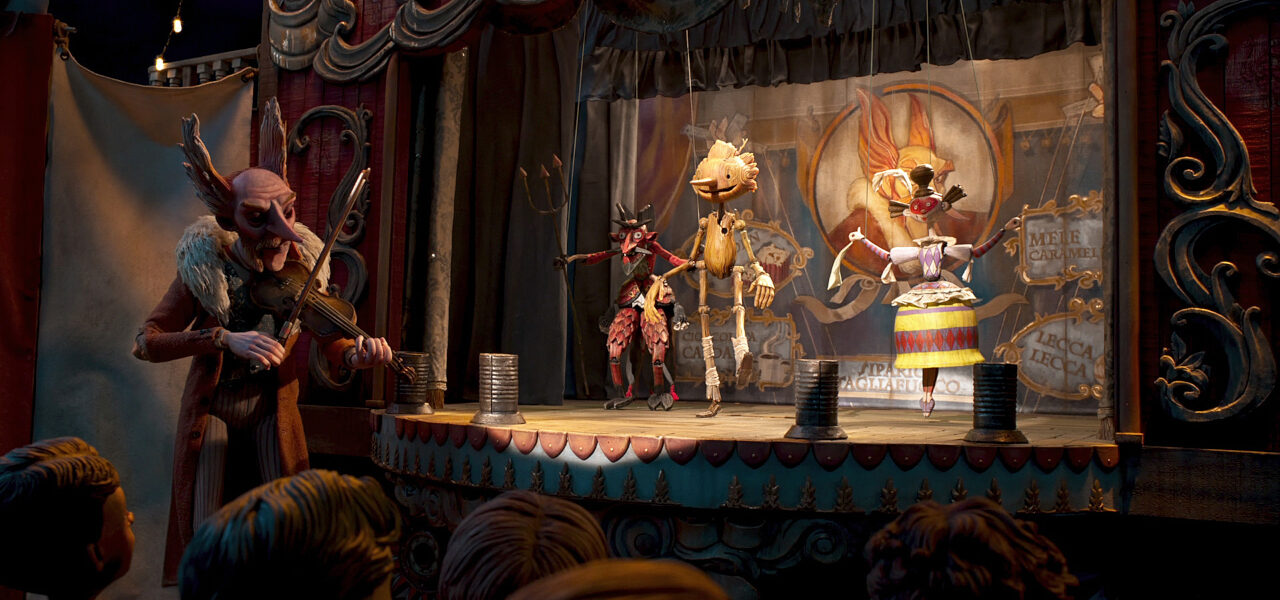
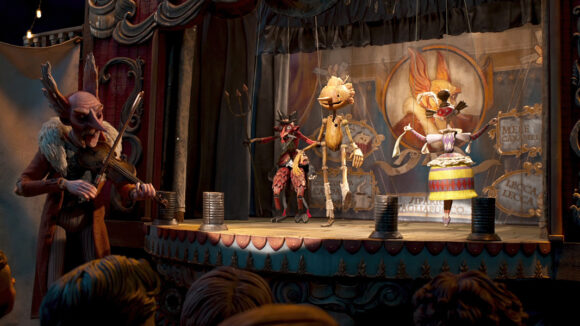
‘Guillermo Del Toro’s Pinocchio’ Reviews Roundup: Netflix’s Stop-Motion Adaptation Is A Gem
Guillermo del Toro’s Pinnochio, Netflix’s most ambitious and prestigious animated feature of the year, debuts worldwide on the platform this Friday.
Since premiering at BFI London Film Festival in October, reviews for the stop-motion feature have been trickling in as it screened at other festivals and events before embarking on a limited theatrical run last Friday. And so far, it’s all good for literature’s most famous marionette.
Del Toro and co-director Mark Gustafson’s take on Pinocchio has a certified fresh score of 97% on Rotten Tomatoes. That caps off a heck of a year for Netflix animation, and surpasses the Rotten Tomato scores of the streamer’s five other 2022 original animated feature releases, Scrooge: A Christmas Carol (the lone “rotten” entry at 31%) Wendell & Wild (80%), My Father’s Dragon (88%), Apollo 10 1/2 A Space Age Childhood, and The Sea Beast (94%).
Critics are praising Pinocchio’s stunning visuals, some even singling them out as the best stop-motion work done in years. Del Toro himself is similarly complimentary towards the work done by artists who worked on the film, and has expressed as much in the film’s credits. Explaining how, del Toro tweeted:
One significant step on Pinocchio (2022) is that we credit the animators right up front alongside the cast members- because they are. And we are touring w the puppets and Georgina Hayns to showcase the artistry that allows that performance.
Reviewers have also been impressed by how the film handles complex themes, which are presented in a way that adults can appreciate and that children can understand. This is a film that, while not made for kids, can certainly be seen by them, especially if parents are willing to talk about some of the more specific historical and complex issues faced by the characters.
Here’s what’s been said about Guillermo del Toro’s Pinocchio so far:
Leslie Felperin at The Hollywood Reporter, a stop-motion superfan, enjoyed the film’s intentional imperfections:
Being the sort of critic who has almost never met a work of stop-motion animation she didn’t like, especially if it’s just on the edge of being too creepy for kids, and who loves any adaptation of Pinocchio, this film is right in my sweet spot. The fact that the filmmakers choose deliberately, per the film’s press notes, to make the animation just a little bit stuttery, drawing attention to the technique and not smoothed out as it so easily could have been given modern technology, is the maraschino cherry on the sweet spot… Plus we get delicious uncanny valley sprinkles in the character designs for the living, non-wooden characters, folks who are expressive but not too expressive, always keeping us aware of the fact that we’re watching a stop-motion puppet show.
Writing for Indiewire, Rafael Motamayor started his review off by praising the film’s stop-motion animation as the best he’s seen in years:
Guillermo del Toro’s Pinocchio reimagines the classic fantasy tale through the most beautifully-made stop-motion animation in years, a powerful and life-affirming father-and-son story about acceptance and love in the face of pain, misery, and fascism, and the filmmaker’s love of monsters in what is easily his best film in a decade.
Luke Y. Thompson at the AV Club appreciated the Claymation DNA that can be found in the film thanks to co-director and Will Vinton Studios veteran Mark Gustafson:
Co-directing with Will Vinton Studios Claymation veteran Mark Gustafson, del Toro creates as fully designed a reality as he ever has in live action; arguably more so, since he’s also creating actors from scratch as well. The humans, for the most part, are so caricatured that it’s remarkable you end up empathizing with them, yet the voice acting and the small gestures sell the illusion. Unlike the ultra-smooth stop-motion of Wendell & Wild, the animation here, presumably using a lower frame rate, retains the herky-jerky quality of older entries in the medium, which is of a piece with the many classic cinema allusions and references scattered throughout.
Variety critic Guy Lodge enjoyed the film’s adherence to an aesthetic that shows a great deal of respect to its audience, regardless of age:
[T]he animation commendably resists cuddliness at every turn, reveling in the macabre visual textures of a whale’s shuddering inner organs or the severe, soaring lines of 1930s Fascist architecture. A sophisticated color palette of russets, tans, and sunset ochres is led by the lumbery constitution of Pinocchio itself, as well as the flames that, in multiple set pieces, are his greatest enemy… Aesthetically and narratively, then, this is a Pinocchio that credits its young audience with eminently grownup taste and intelligence…
Robert Abele at the Los Angeles Times recognized the film’s potential as a tool that could be used by parents to initiate meaningful conversations with their children:
[I]t’s all plenty inventive and heart-conscious, grim without being punishing and, in its openness about impermanence and humility, could spark some significant parent-child exchanges about love, flaws, and the necessity of meaningful time together. Which makes a bracingly big-picture, big-themed Pinocchio like Del Toro’s a worthy movie candidate for a close-knit family’s catalog of shared experiences.
Guillermo del Toro’s Pinocchio was directed by Guillermo del Toro and Mark Gustafson from a screenplay by del Toro and Patrick McHale, based on the book by Carlo Collodi. It’s a Netflix presentation of a Double Dare You! and Shadowmachine production in association with the Jim Henson Company.
Key creative on the film includes Frank Passingham (director of photography); Guy Davis and Curt Enderle (production design); Ken Schretzman and Holly Klein (editing); Alexandre Desplat (music); Ian MacKinnon, Peter Saunders, and Georgina Hayns (director of character fabrication); Brian Leif Hansen (animation supervisor); Robert DeSue (art direction); Jeffrey Schaper (vfx supervisor); Scott Martin Gershin (sound design and supervision); and Jon Taylor and Frank A. Montano (re-recording mixing).

